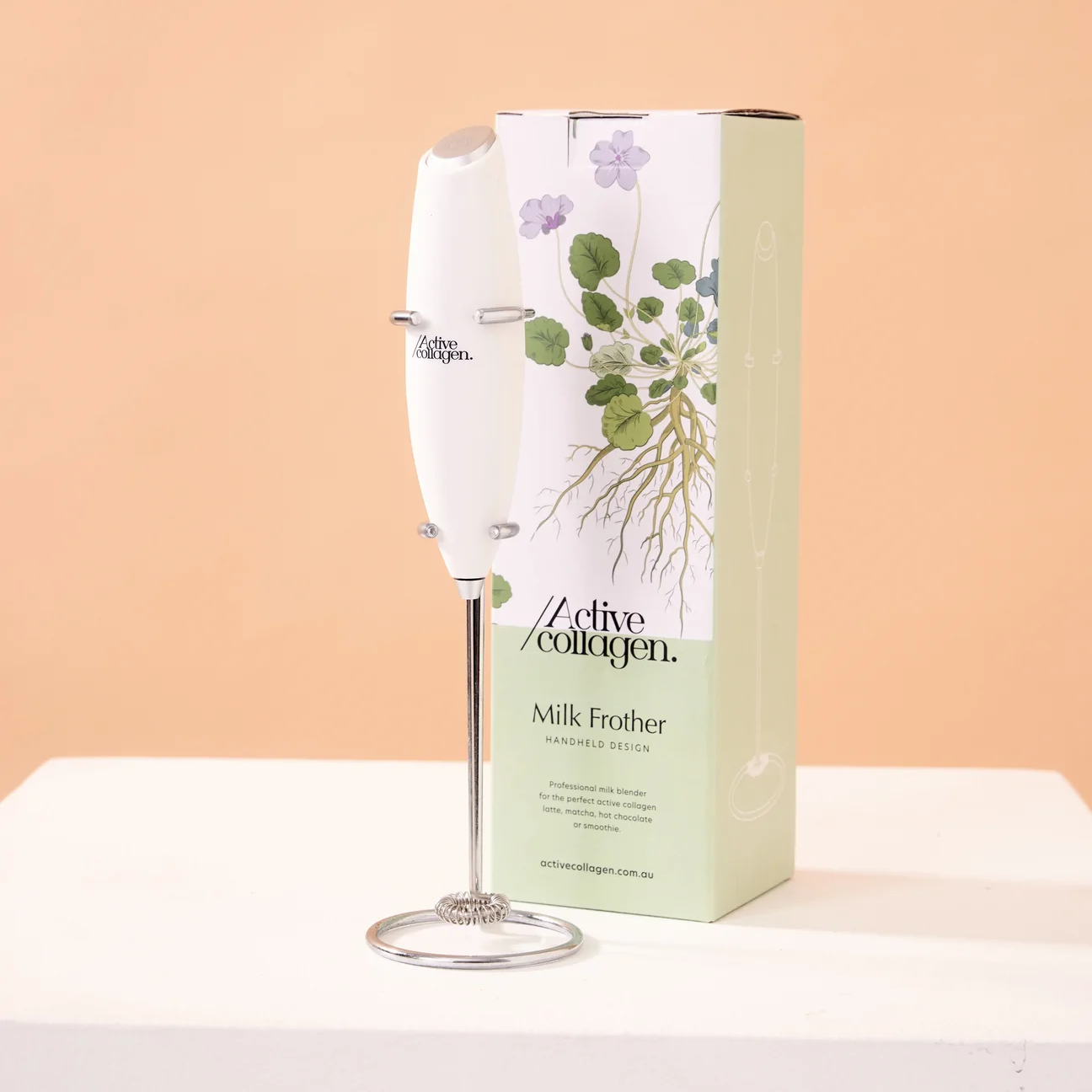Ah yes the science of happiness. It’s far more complicated than just waking up on the right side of the bed. Ever heard of gut feelings? Science is showing that it’s a real thing.
There is a growing knowledge surrounding how our gut health is linked to our brain health and effecting our mood, intuition and our overall mental health. Our moods are an important aspect of our health and let’s face it if we can all improve our moods through food why on earth not!
Let’s break down what this gut brain connection is and what the best ways are to support it.
The Gut-Brain Axis
Our gastrointestinal health is vital in more ways than one. Of course, it is the site for nutrient absorption, digestion and waste elimination but it is also home to millions of different microbes that we refer to as our gut microbiome.
This connection between gut and brain is known as the gut-brain axis. It is a physical and chemical bidirectional interaction between our nervous system, the gastrointestinal tract and the gut microbiome. Basically, there is constant crosstalk going on between our enteric system and nervous system that allows the brain to influence gut activity and vice versa. Studies have proven the link between mood disorders - like anxiety and depression - and co-occurring gastrointestinal disturbances, and gastrointestinal diseases – like IBS – involving psychological comorbidities.
There are two major factors that affect our gut-brain axis: neurotransmitters and the gut microbiome. Neurotransmitters are chemicals that are part of the network that sends messages to our brain via nerves. These chemicals include serotonin, glutamate, dopamine and g- aminobutyric acid (GABA). They are actually made in the gut and are the metabolites of certain gut bacteria – such as GABA is synthesised from Bifidobacterium, and around 95% of serotonin is found in the gut. Neurotransmitters transmit excitatory or inhibitory messages to the brain which control behaviour, memory and emotion.
The gut microbiome is ideally made up of an abundance of beneficial bacteria, such as Bifidobacterium and Akkermansia, and less pro-inflammatory bacteria, such as Firmicutes. Essentially, their beneficial effects come from fermentation of dietary fibre to short-chain fatty acids (SCFAs, which have anti-inflammatory effects), energy metabolism and immunity. However, they do produce our ‘happy’ neurotransmitters such as serotonin and maintaining a healthy gut flora is key to preventing conditions including depression.
Feeding Your Gut Microbes
Our gut microbiome thrives and performs at its best when in balance. And dietary patterns have a profound impact on keeping this balance healthy. There are various foods that positively support gut flora and we’ve picked out a few that we think cannot be missed.
Probiotics – are the live bacteria (sometimes referred to as live cultures) that when ingested add to the beneficial bacteria colonies in the gut. These include strains like Bifidobacterium and Lactobacillus that you may have seen on the ingredients lists of yoghurts. Often probiotics are prescribed in supplement form for treating gut issues such as diarrhea or for restoring good bacteria after antibiotic use. However, there are so many probiotic rich foods that can be easily added to anyone’s diet. These include most fermented foods such as yoghurt, kefir, kombucha, sauerkraut, kimchi, tempeh and miso.
Prebiotics – feed our probiotic bacteria. They nurture the growth of our good bacteria by passing through the small intestine undigested where they then ferment in the large intestine acting as food for our gut flora. Prebiotics are generally found in plant foods. A fabulous source of prebiotics is cooked and cooled potatoes. By eating them cool this provides an excellent source of resistant starch which is a favourable food for the gut microbes.
Fibre – is crucial for the health of our microbiome. There are different types of fibre including insoluble and soluble. Insoluble fibre provides faecal-bulking effects and are slowly digested or not digested at all by gut bacteria. Soluble fibres are fermented by gut bacteria producing SCFAs and form a gel like consistency that delays absorption of glucose and aids digestion. Insoluble fibres are found in mostly wholegrains and vegetables, whereas soluble fibres are present in fruits, oats and psyllium.
Support the Gut Lining
Much like our skin, our gut has a lining that acts as a barrier from the external environment, is highly permeable and is the site of nutrient absorption. However, unlike our skin this lining is moist much like the inside of the mouth although does require a little TLC. During times of low dietary fibre intake this lining can become damaged by less beneficial microbes and may cause conditions such as ‘leaky gut’ – increased intestinal permeability. Certain fibres can actually help protect the lining of the gut. When apples are cooked or stewed they release more of the beneficial prebiotic fibre called pectin that creates a gel-like consistency which aids the lining. Apple crumble never sounded so good!
There is also research surrounding the use of collagen in strengthening the intestinal barrier. Collagen provides essential proteins necessary for the rebuilding of cells in damaged membranes like our gut lining and may prove beneficial in intestinal lining dysfunctions like ‘leaky gut’. If you’re curious, maybe it’s time to give Active Collagen All-In-One a try?
Our gut health can sometimes be neglected or need a bit of TLC, and this can be reflected in the way you feel, think and act. Having a happy gut may just be the missing link to having a happy mind.
Osadchiy, V., Martin, C. R., & Mayer, E. A. (2019). The Gut-Brain Axis and the Microbiome: Mechanisms and Clinical Implications. Clinical gastroenterology and hepatology : the official clinical practice journal of the American Gastroenterological Association, 17(2), 322–332. https://doi.org/10.1016/j.cgh.2018.10.002
Appleton J. (2018). The Gut-Brain Axis: Influence of Microbiota on Mood and Mental Health. Integrative medicine (Encinitas, Calif.), 17(4), 28–32. https://www.ncbi.nlm.nih.gov/pmc/articles/PMC6469458/
Banskota, S., Ghia, J. E., & Khan, W. I. (2019). Serotonin in the gut: Blessing or a curse. Biochimie, 161, 56–64. https://doi.org/10.1016/j.biochi.2018.06.008
Hills, R. D., Jr, Pontefract, B. A., Mishcon, H. R., Black, C. A., Sutton, S. C., & Theberge, C. R. (2019). Gut Microbiome: Profound Implications for Diet and Disease. Nutrients, 11(7), 1613. https://doi.org/10.3390/nu11071613
Chen, Y., Xu, J., & Chen, Y. (2021). Regulation of Neurotransmitters by the Gut Microbiota and Effects on Cognition in Neurological Disorders. Nutrients, 13(6), 2099. https://doi.org/10.3390/nu13062099
Raatz, S. K., Idso, L., Johnson, L. K., Jackson, M. I., & Combs, G. F., Jr (2016). Resistant starch analysis of commonly consumed potatoes: Content varies by cooking method and service temperature but not by variety. Food chemistry, 208, 297–300. https://doi.org/10.1016/j.foodchem.2016.03.120
Makki, K., Deehan, E. C., Walter, J., & Bäckhed, F. (2018). The Impact of Dietary Fiber on Gut Microbiota in Host Health and Disease. Cell host & microbe, 23(6), 705–715. https://doi.org/10.1016/j.chom.2018.05.012
Chen, Q., Chen, O., Martins, I. M., Hou, H., Zhao, X., Blumberg, J. B., & Li, B. (2017). Collagen peptides ameliorate intestinal epithelial barrier dysfunction in immunostimulatory Caco-2 cell monolayers via enhancing tight junctions. Food & function, 8(3), 1144–1151. https://doi.org/10.1039/c6fo01347c




